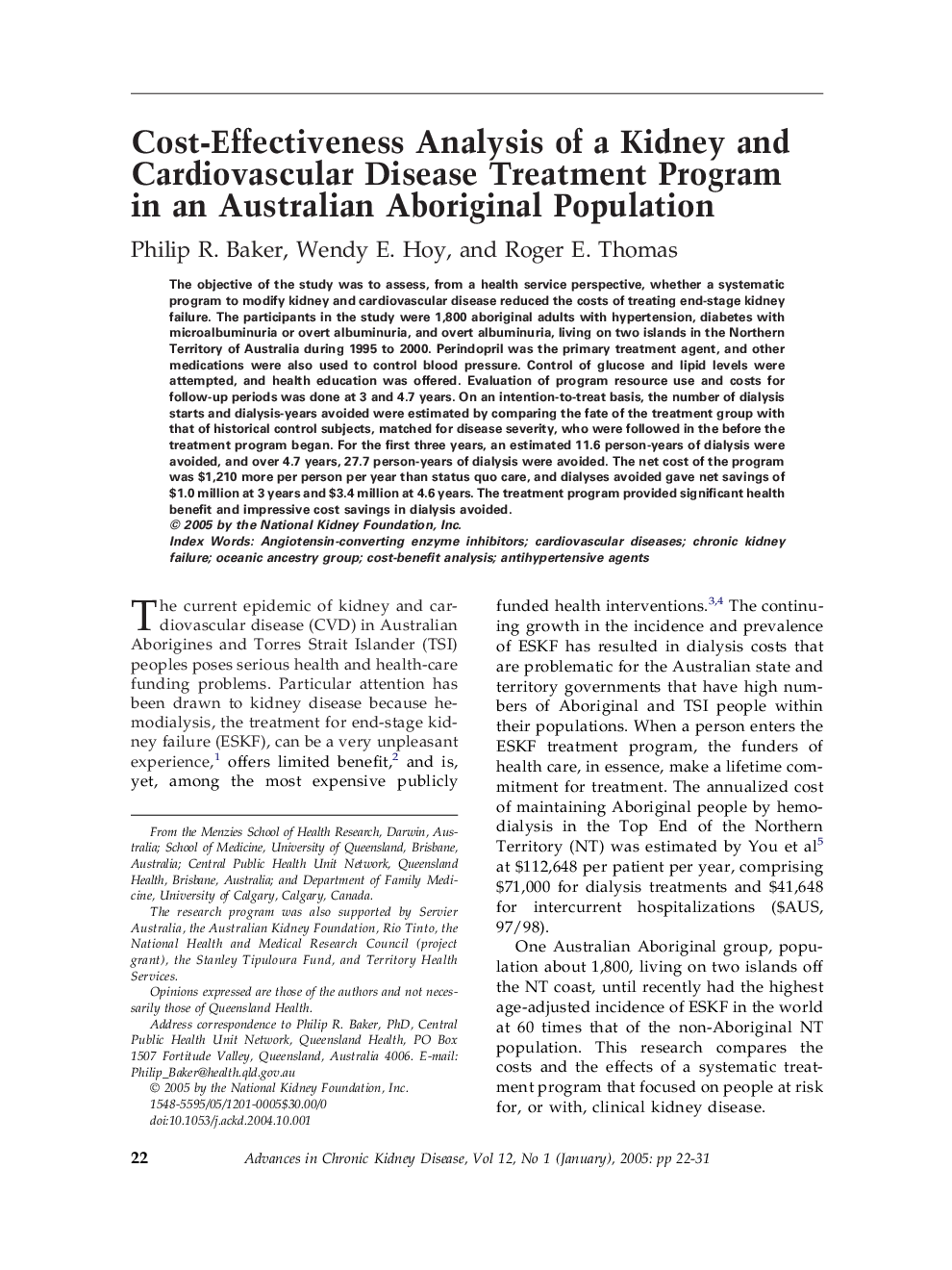| Article ID | Journal | Published Year | Pages | File Type |
|---|---|---|---|---|
| 9307771 | Advances in Chronic Kidney Disease | 2005 | 10 Pages |
Abstract
The objective of the study was to assess, from a health service perspective, whether a systematic program to modify kidney and cardiovascular disease reduced the costs of treating end-stage kidney failure. The participants in the study were 1,800 aboriginal adults with hypertension, diabetes with microalbuminuria or overt albuminuria, and overt albuminuria, living on two islands in the Northern Territory of Australia during 1995 to 2000. Perindopril was the primary treatment agent, and other medications were also used to control blood pressure. Control of glucose and lipid levels were attempted, and health education was offered. Evaluation of program resource use and costs for follow-up periods was done at 3 and 4.7 years. On an intention-to-treat basis, the number of dialysis starts and dialysis-years avoided were estimated by comparing the fate of the treatment group with that of historical control subjects, matched for disease severity, who were followed in the before the treatment program began. For the first three years, an estimated 11.6 person-years of dialysis were avoided, and over 4.7 years, 27.7 person-years of dialysis were avoided. The net cost of the program was $1,210 more per person per year than status quo care, and dialyses avoided gave net savings of $1.0 million at 3 years and $3.4 million at 4.6 years. The treatment program provided significant health benefit and impressive cost savings in dialysis avoided.
Keywords
Related Topics
Health Sciences
Medicine and Dentistry
Nephrology
Authors
Philip R. Baker, Wendy E. Hoy, Roger E. Thomas,
